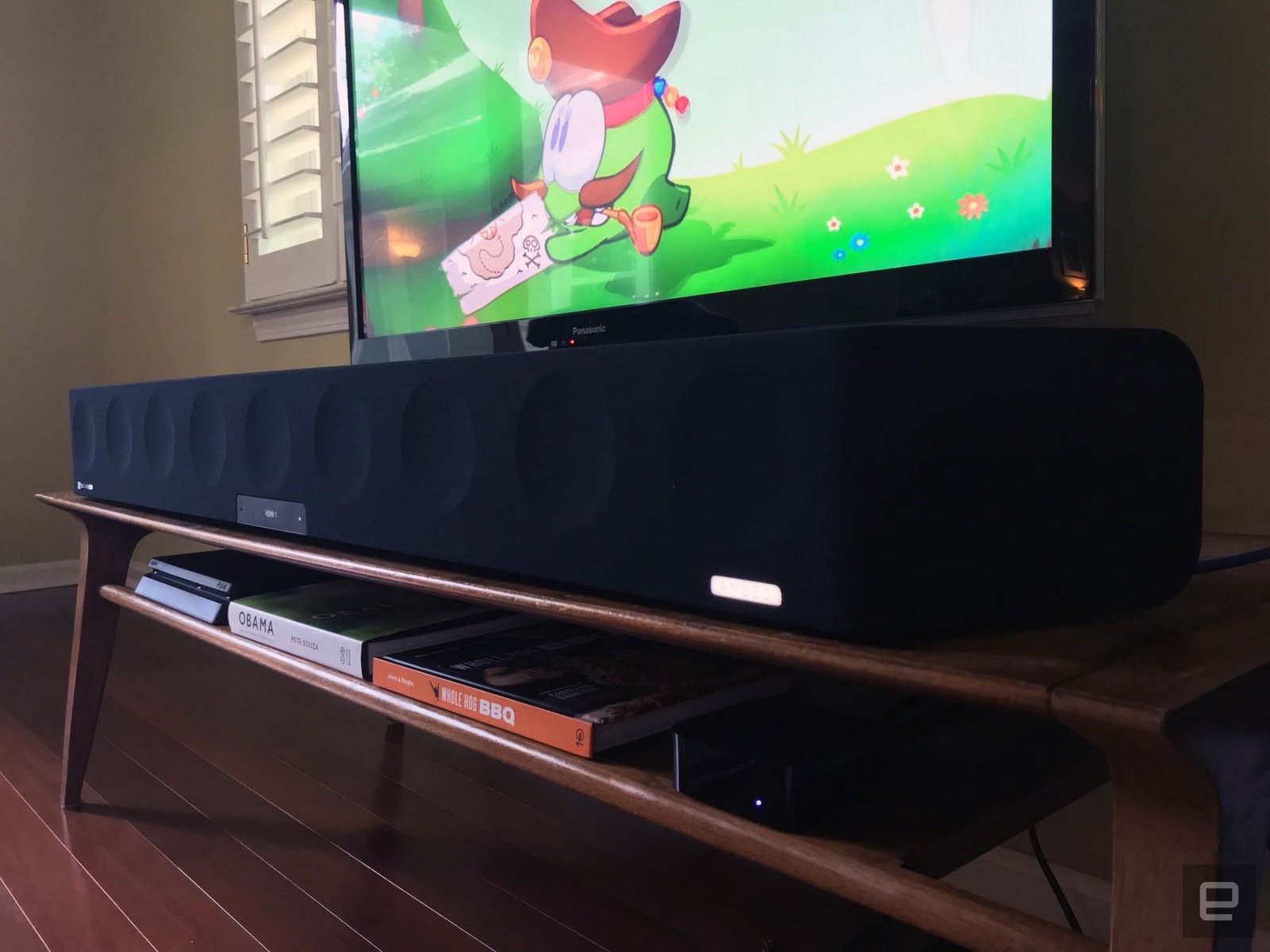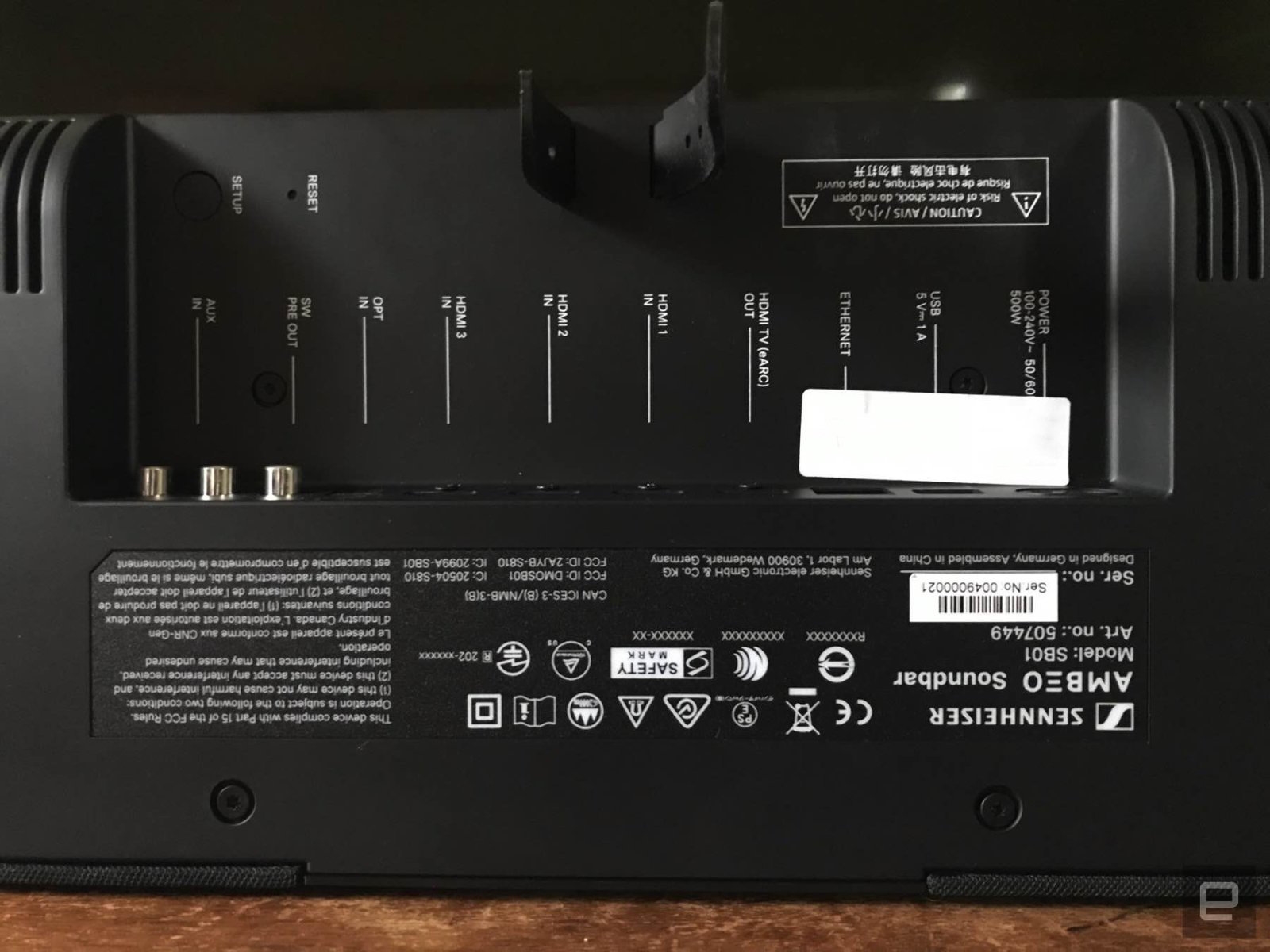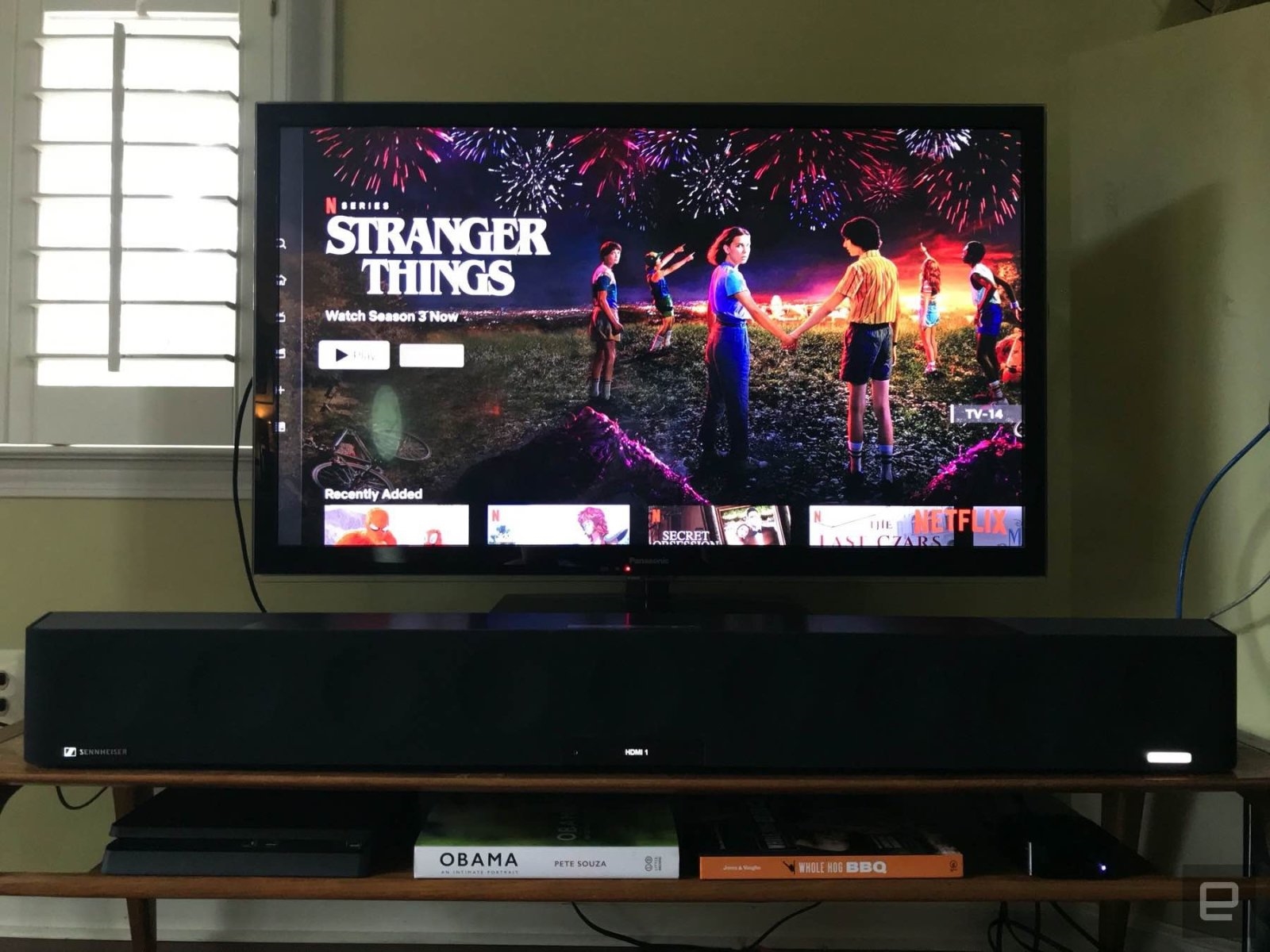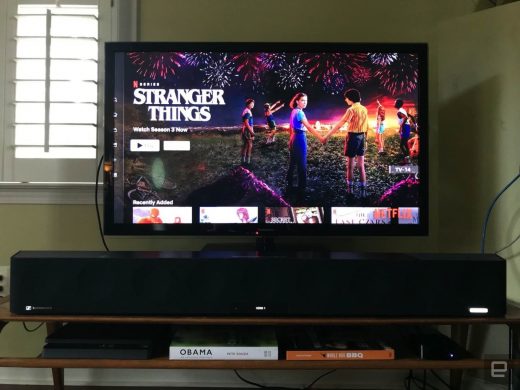Sennheiser Ambeo Soundbar review: A full bag of tricks

Sennheiser has spread the gospel of its Ambeo tech for years. The broad pitch is incredibly immersive audio for AR, VR and your living room. As far as consumers are concerned, though, Ambeo is just a headset that records 3D audio and headphones for Magic Leap. At CES 2018, Sennheiser revealed it was cramming the technology inside a soundbar, so we could all use it for a more common activity: watching TV. It took the company another year and a half to release the $2,500 Ambeo Soundbar, and the wait was mostly worth it.
When it comes to overall sound quality, immersive audio is where the Ambeo Soundbar really shines. There’s a lot more dimensionality to the sound than I’m used to from my Sonos Playbar and Sub combo. And you don’t need Dolby Atmos content to notice the difference, though it certainly enhances the spatial quality. The Ambeo Soundbar comes with what Sennheiser calls Upmix Technology, which turns regular ol’ 5.1 audio (Dolby Digital, DTS, etc.) into 3D sound. The upmix is certainly an improvement over the norm, but the processed result isn’t quite as good as Atmos. The Ambeo Soundbar supports a range of high-res audio formats in addition to Dolby Atmos, including MPEG-H and DTS:X. The latter also sounds better than upmixed 5.1, but Atmos remains the gold standard on this device.
My living room is a nightmare for sound: angled ceilings, overhangs for lights and other elements for audio to bounce off. The Ambeo Soundbar still did an admirable job following the calibration process. Of course, like many companies, Sennheiser recommends installing the speaker in the center of a wall at least 39 inches (1 meter) from the side walls or ceiling. You have to give this thing room to work, so if you can’t do that, this probably isn’t the soundbar for you.
My main gripe with the Ambeo Soundbar is a very basic thing Sennheiser overlooked. When you use your TV as the video source — either smart TV apps or devices connected to your TV — the audio and video aren’t in sync if you use an optical connection. The sound isn’t off by much, but it’s enough to be annoying. I found myself constantly distracted trying to tell if the audio matched the visuals when I connected the soundbar to my TV via that input. This is how I connect my Sonos gear, so it made sense to try it first. There is a lip sync option inside the app, and once you enable it, a slider appears for adjustments of 1 to 100 milliseconds. It still didn’t help my optical woes. To remedy this, you can connect any streaming devices to the soundbar itself, and then the soundbar to your TV via the HDMI output on the speaker. It seems like you also have to enable the lip sync feature for each connection, not just any audio for the soundbar.

The company makes it clear that HDMI eARC is the best way to connect the Ambeo Soundbar to your TV, so choosing to employ the optical connection isn’t the ideal scenario. I could tell a massive difference between the two, with HDMI being far superior. Sennheiser is also upfront that an HDMI ARC (no “e”) jack will only give you surround sound to “a limited extent.” Basically, you’ll want to check that your TV is eARC-equipped, otherwise you won’t get your full $2,500 worth out of this purchase, and that would be a damn shame. When I connected everything to the soundbar and turned on the lip sync setting, the audio matched whatever I was watching perfectly. Crisis averted.
As I already mentioned, it handles most music genres well, but using it to watch TV is where the Ambeo audio is really on full display. Alongside the 3D enhancements, the speaker also has a lot more clarity and detail than I’m used to with my Sonos. Don’t get me wrong, the Playbar and Sub sound really good, but there’s a lot of ambient or subtle details in scenes that the Sonos setup doesn’t always pick up.
The atrium scene in Spider-Man: Into the Spiderverse is a prime example. You can hear all the echoes and background hum of other students talking, just as you would in a room like that in real life. Plus, the Ambeo Soundbar has a lot more to offer when Miles & Co. are swinging around and doing battle. There’s better dimension and direction to the audio, and it’s a step above the “virtual surround sound” a lot of soundbars claim. Netflix’s new Formula 1 series also shines with this speaker. There’s already a lot of motion and direction to the audio, but the Ambeo Soundbar increases that exponentially. It doesn’t sound like you’re at the track, but it sounds like you’re a heck of a lot closer.

There are plenty of Atmos-enabled soundbars out there that do a decent job at simulating surround sound. Sony offers a few options with upward-firing speakers that will beam audio from the top to make things a bit more immersive. Its “flagship” model is the HT-ST5000, which comes with a subwoofer for $1,299.99. The HT-ST500 also has handy sound modes to cater to what you’re watching or listening to, virtual 7.1.2 surround sound and a range of connections that include Chromecast built-in and Spotify Connect. It’s also smaller and a heck of a lot lighter. For the same price as this Sony model, LG has the SL10Y with a similar feature set, though it’s 5.1.2. The SL10Y does have Google Assistant built-in on top of Chromecast, so it can accept your voice commands directly. Several companies make Dolby Atmos soundbars that simulate surround sound, but the top-end options from Sony and LG should definitely be on your list to consider as Ambeo alternatives.
Sennheiser’s Ambeo Soundbar is a beast. It’s big and heavy, but it’s also a powerful living room speaker with impressive 3D audio chops. It needs room to do its thing and Dolby Atmos content to really shine. You can get that from places like Netflix, if you’re willing to pay extra. For example, Atmos on Netflix requires the pricier UHD plan. My main issue with the soundbar, though, is the somewhat limited lip sync feature in the Smart Sound app. It’s something Sennheiser could expand, sure. Right now, audio directly sourced from a TV doesn’t sync exactly with all connections, and it’s distracting. You can remedy this by connecting streaming gear directly to the speaker itself. If you rely on smart TV apps from an older display that doesn’t fit Sennheiser’s ideal setup criteria, it could be an issue.
There are more affordable yet still very capable options abound if Dolby Atmos is the primary goal. They might not impress with 3D audio as much at the Ambeo Soundbar does, but they also cost about half as much. If money isn’t an issue, though, Sennheiser sets a new standard for what an all-in-one soundbar can sound like.
(70)



